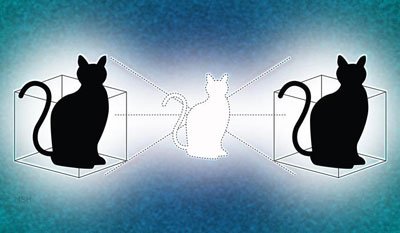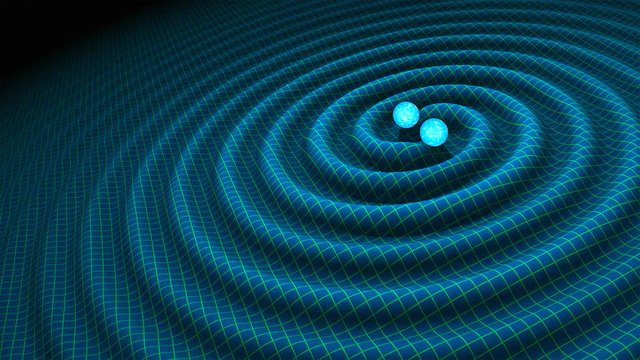What new year could be complete without a summary of the Physics breakthroughs of the preceding year?
We live in very exciting times in the field of science as fast developing new technologies reveal fascinating discoveries of the universe we are so fortunate to inhabit. Year 2016 has seen some amazing breakthroughs - in physics especially. Presented here (in no particular order) are the top ten physics breakthroughs according to physicsworld.com
- The direct observation of gravitational waves
- Scientists build a gravimeter
- Rocky planet found in habitable zone around Sun's nearest neighbour
- Negative refraction of electrons spotted in graphene
- Ion-based quantum computers become feasible (quantum entanglement)
- new microscope lens combines high resolution with large field of view
- Scientists create a heat engine based on just one atom
- Steps taken towards the development of a 'nuclear clock'
- Schrödinger's cat lives and dies in two boxes at once
The direct observation of gravitational waves
We are all aware of the presence of gravity but scientists have long pondered the mechanism of its action. What is the actual process of the physical force that pulls us to the ground when we fall - that keeps the Earth rotating around the Sun?
Almost exactly 100 years after first postulated by Albert Einstein in his general theory of relativity, the existence of gravity waves have, this year, been proven by scientists. The Laser Interferometer Gravitational-Wave Observatory (LIGO) is a large-scale physics experiment and collaboration by an international community to detect cosmic gravitational waves. Interferometry is a set of techniques in which waves, usually electromagnetic, are superimposed in order to extract information.
Ligo operates observatories around the world that shoot lasers through long tunnels, trying to sense any warping in the fabric of space-time.
Each observatory supports an L-shaped ultra high vacuum system, some 4 kilometers on each side. Up to five interferometers can be set up in each vacuum system.

Northern leg (x-arm) of LIGO interferometer on Hanford Reservation - Wikipedia
The first observation was made in September 2015 and was announced in February this year. It was generated by the collision of two black holes more than a billion light-years from Earth. A second set of gravitational waves was detected by LIGO in December 2015, and this so-called 'Boxing Day event' was announced in summer this year. Gravitational waves are ripples in the fabric of space–time...These observations culminate from a decades-long hunt for 'interstellar undulations'.
Scientists build a gravimeter
Scientists at the University of Glasgow built a gravimeter, which can make very precise measurements of Earth's gravity, that is relatively inexpensive and small. The device could be deployed in military drones, civil engineering , exploration for minerals, or for the monitoring of volcanoes.
The device is based on a "proof mass", which is a piece of silicon about 10 mm long that sits on top of two flexible struts. The mass, struts and frame are all made using standard semiconductor-manufacturing processes.

An Autograv CG-5 gravimeter being operated - Wikipedia
Rocky planet found in habitable zone around Sun's nearest neighbour
An exoplanet (a planet which orbits a star outside the solar system) - which has been named Proxima b, has been discovered, with a mass about 1.3 times that of the Earth. It is thought most likely a terrestrial planet with a rocky surface. Proxima b exists in the 'habitable zone' (meaning it could - in theory - sustain water) orbiting around the Sun's nearest neighbour - Proxima Centauri. Proxima Centauri is a red-dwarf star which is just 4.2 light-years distant from the Sun.

Artist's conception of the surface of Proxima Centauri b. The Alpha Centauri binary system can be seen in the background, to the upper right of Proxima - Wikipedia
Negative refraction of electrons spotted in graphene
Negative refraction is a property of some artificial metamaterials and can be used to create novel optical devices such as a perfect lens. Metamaterials are substances engineered to comprise a property not found in the natural world. They are built from assemblies of elements fashioned from composite materials such as metals or plastics.
Scientists at Columbia University and colleagues manipulated graphene to ensure the interface was smooth enough to minimize reflections. This allowed them to measure the negative refraction of electrons. Negative refraction could be used to bring a diverging electron beam to a sharp focus and thus form the basics of an electronic switch that would consume minimal quantities of energy. Negative refraction could be used to create new types of optical devices such as very powerful lenses.
Ion-based quantum computers become feasible (quantum entanglement)
Scientists at The University of Oxford and colleagues at NIST have created and measured quantum entanglement between pairs of two different kinds of ions. The research marks an important step towards the implementation of ion-based quantum computers based on two or more different types of ion. These hybrid systems aim to exploit the fact that some ions have advantages over others in performing specific quantum-computing tasks.
New microscope lens combines high resolution with large field of view
Scientists at the University of Strathclyde have created a new revolutionary new microscope lens offering the unique combination of a large field of view with high resolution. The device enables a confocal microscope to create 3D images of much larger biological samples than was previously possible. Confocal microscopy is an optical imaging technique for increasing optical resolution via a spatial pinhole placed at the confocal plane of the lens to eliminate out-of-focus light.
The scientists were able to view single cells, heart-muscle fibres and sub-cellular details throughout the whole depth (not just the surface) - of a rat embryo. Called a mesolens, the device allows a confocal microscope to create 3D images of much larger biological samples than was previously possible.
Scientists create a heat engine based on just one atom
Kilian Singer, Johannes Roßnagel and colleagues at the University of Mainz have created an engine based on just one atom. The heat engine converts a difference in temperature to mechanical work by confining a single calcium atom in a funnel-shaped trap. The researchers then heated the atom using electrical noise, and as its temperature increased, its oscillations became larger. By turning the noise on and off periodically, the researchers caused the atom to oscillate between the two ends of the trap.
Their next research goal is to cool the atom further and confine it more tightly, so that it no longer behaves as a classical particle but rather as a quantum wavepacket. This could open the door to studies of the interface between thermodynamics and quantum mechanics.
Steps taken towards the development of a 'nuclear clock'
Whereas an atomic clock depends on the frequency of an electronic transition in an atom's shell it has in the past been theorised that a 'nuclear clock' would provide greater accuracy, or stability, by using nuclear transition as its benchmark. Such a clock would, in principle, be much more stable than a conventional atomic clock because the nucleus is much less susceptible to interference from stray electromagnetic fields. Scientists in Germany have proven the theory by conducting experiments with atoms and ions of thorium-229, a radioactive isotope of thorium with a half-life of 7340 years.
Schrödinger's cat lives and dies in two boxes at once
In an attempt to interpret one principle of quantum mechanics by means of everday objects physicist Erwin Schrödinger devised his famous thought experiment that a cat in a box could simultaneously be both alive and dead until an observation is made. Physicists at Yale University and colleagues in France have proven the theory by replicating two 'cat boxes' with entangled microwave cavities - and the cats with photons existing in each cavity. They managed to put the entire system into a state which demonstrated both 'cats' (in both boxes) were both alive and dead until a measurement was made.

Michael S Helfenbein/Yale University
For further reading - http://physicsworld.com/cws/article/news/2016/dec/12/ligo-gravitational-wave-discovery-is-physics-world-2016-breakthrough-of-the-year

95 votes = 66 cents!!! how humiliating!
Downvoting a post can decrease pending rewards and make it less visible. Common reasons:
Submit
If you like physics, check this out https://steemit.com/steemit/@divilati/will-bouling-ball-and-a-feather-fall-in-the-same-speed-if-dropped-from-the-same-height-galileo
Downvoting a post can decrease pending rewards and make it less visible. Common reasons:
Submit